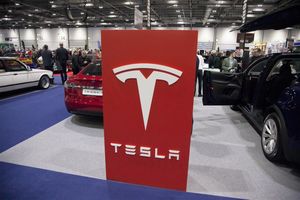Solar Inverters play a key coordinating role in smart photovoltaic systems, and as solar technology advances, their responsibilities increase, including optimizing performance and supervising photovoltaic equipment. But what exactly does an inverter do? Let’s introduce its four key functions.
01
Dc/Ac Conversion
At its core, an On Grid Solar Inverter converts the electrical output of solar panels, converting direct current into the more widely used alternating current. Ensuring that solar energy can be seamlessly adapted for use in homes, commercial establishments, or seamlessly integrated into larger grid projects such as large utility-scale solar arrays.
This basic functionality highlights the critical role of 48V Solar Inverters in bridging the gap between solar power generation and various power consumption needs.
Optimize Power Generation
Their responsibilities extend to tracking the voltage levels of solar modules and determining the optimal power levels at which these modules can operate efficiently. As PVEL outlines, environmental factors such as sun shading or potential module degradation can pose challenges.
In this case, the role of the Micro Solar Inverter becomes crucial as it ensures accurate identification of peak power within the string, preventing potential inefficiencies that could otherwise reduce the overall energy production of the solar system.
03
Network Integration And Communications
The emergence and development of smart inverters marks the transition from traditional one-way communication to more complex two-way interaction with the power grid. Equipped with advanced software features, the latest generation of inverters go beyond their traditional role.
Their capabilities extend to managing voltage, frequency, and complex communications and control. This enhanced interface enables solar systems to actively improve grid stability and reliability.
04
Enhance Network Stability
When faced with voltage changes, these smart inverters can seamlessly transition to standby mode, carefully observing the duration of the disturbance. They only exercise their discretion to deactivate if interference continues to exceed an acceptable threshold.
This strategic approach prevents sudden shutdowns of distributed resources and ensures stable and consistent power production, helping to improve the overall stability of the grid.
Due to the complex composition of many electronic components and the large number of tasks they perform, inverters are more prone to failure than other components in a photovoltaic system. Both string inverters and central inverters have obvious advantages and disadvantages. Relatively speaking, string inverters provide a more straightforward and easier to manage maintenance process.
Difference Between a Battery Inverter And a Solar Inverter
A battery inverter and a solar inverter serve different purposes in a renewable energy system:
1. Solar Inverter: A solar inverter is specifically designed to convert the direct current (DC) electricity generated by solar panels into alternating current (AC) electricity that can be used to power household appliances and be fed into the electrical grid. Solar inverters are a crucial component of a solar power system and are essential for converting the energy generated by solar panels into a usable form.
2. Battery Inverter: A battery inverter, on the other hand, is designed to manage the charging and discharging of batteries in a battery storage system. It is responsible for converting the DC electricity from the batteries into AC electricity for use in the home or for feeding back into the grid. Battery inverters also control the flow of electricity to and from the batteries, ensuring efficient and safe operation.
Do You Need An Inverter For Every Solar Panel?
No, you do not necessarily need an inverter for every solar panel in a solar power system. In a typical solar power installation, multiple solar panels are connected in series or parallel to form an array. These solar panels are then connected to a single solar inverter or a set of inverters, depending on the system design.
The solar inverter is responsible for converting the direct current (DC) electricity generated by the entire array of solar panels into usable alternating current (AC) electricity. Therefore, the solar panels within the array do not each require individual inverters. Instead, the combined output of the solar panels is directed to the inverter(s) for conversion.
In some cases, especially in larger commercial or utility-scale solar installations, multiple inverters may be used to manage the output of the solar panels more efficiently. However, the general principle is that a single inverter or a small number of inverters can handle the conversion of the electricity generated by multiple solar panels.
Does a Solar Inverter Need Internet?
Modern solar inverters come with built-in monitoring and communication capabilities that allow them to connect to the internet. This connectivity enables remote monitoring, performance tracking, and firmware updates. Additionally, internet connectivity can provide real-time data on energy production and system performance, allowing homeowners and solar system operators to monitor their solar power system’s efficiency and troubleshoot any issues.
Media Contact
Company Name: 3S Group
Email: Send Email
Country: China
Website: https://www.solar3s.com/







